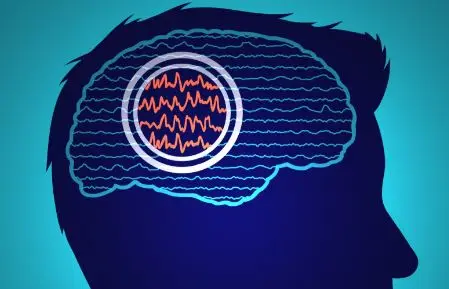Patterns of Psychotropic Drug Use in Veterans with Epilepsy: Do Drug Interactions Matter?
July 12, 2023
Abstract found on PubMed
Rationale: Patients with epilepsy are likely to suffer from psychiatric comorbidities, including depression and anxiety. They often require treatment with multiple psychotropic drugs (PDs). While it is clear that CYP enzyme-inducing ASMs (EIASMs) can increase the oral clearance of multiple medications (thus lowering systemic exposure), it is less clear that all PK interactions are clinically meaningful (e.g. lower efficacy). As a first step in addressing this issue, this study sought to quantify the potential impact of ASM choice, whether EIASM or non-inducer (NIASM), on surrogate markers of suggestive of clinical use, including resultant antidepressant (AD) or antipsychotic (AP) dose, frequency of combination use of AD & AP, and number of multiple drug switches of PDs. Our hypothesis is that because of PK interactions, EIAED treatment would be associated with higher psychotropic drug doses, more frequent Rx adjustments and poly psychotropic comedication, all in order to optimize therapeutic response.
Methods: Using VA pharmacy and national encounter databases, veterans with epilepsy were identified based on having a seizure diagnosis and being prescribed concomitantly an ASM and a psychotropic drug for at least 365 days between 10/1/2010 and 9/30/2014. Patients for whom psychotropic drugs were prescribed any time between beginning and end prescriptions dates of ASMs were considered. Among those, patients receiving both an EIASM + NEIASM concomitantly were categorized with the EIASM group. Patients were evaluated for AD only, AP only and both (AD & AP). To compute average drug doses per day, averages for each patient were computed and averaged again. Multiple drug switches were defined to be for patients who had been prescribed more than three psychotropic drugs during the observation period. Pearson’s Chi-Square test was used to compare relative proportions of AD, AP and AD + AP in both groups.
Results: In all, 16,188 patients were identified (57.0% on EIASM, 43.0% on NIASM) with a mean age of 58.7 years (91.2% male). A larger proportion of patients on EIASM received mono treatment with any psychotropic drug, as compared to NIASM (42.0% vs 36.1%). Among all, 59.6% received AD only, 6.5% received AP only, and 33.8% received both concurrently. Of EIASM, 62.5% were on AD, 5.9% on AP, and 31.7% on both AP & AD. For NIASM, 55.9% received AD, 7.4% AP, and 36.7% on AD & AP.Chi-square showed that the distribution of PD was statistically different between EIASM and NIASM groups. Z tests showed that each difference (AD, AP and both) in proportions was statistically significant (p values (4 tests, one Chi-square, 3 Z tests <0.001) between EIASM vs NIASM. Interestingly, mean doses of AD or AP did not appear to differ between ASM groups.
Conclusions: Concurrent psychotropic drug use is quite common in the VA population with epilepsy, and a large number of patients still receive enzyme-inducing ASMs that may complicate other medical therapies. Interestingly, in seeming contradiction to our hypothesis, mean daily doses of either AD or AP did not appear to differ between inducers vs non-inducers. Similarly, use of polytherapy, and/or multiple trials of various psychotropic drugs did not appear increased in the CYP-induced group. In fact, combination therapy of AD + AP was higher in NIASM than EIASM. These data suggest that perhaps these types of PK interactions may not in fact result in meaningful clinical differences. Since the present analyses did not include clinical psychiatric measures, future analyses examining direct clinical outcomes are clearly warranted.







